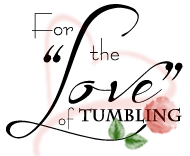These exercises should be done after practice on practice days and at least every other day.
- Splits – left, right, middle
- Band stretching
- Front stretch
- Arabesque stretch
- Leap dynamic stretch
- Scorpion stretch
- Hip flexor and Hamstring stretches
- Band lifts
- Double down drills
The book “311 Sports Stretches” by Michael Alter would be a great addition to your library. Any Pilates and/or Yoga stretches are good also. Your athletes need strength to have flexibility. Good luck, as you work with your athletes in cooperation with your coaches to reach 100% of their potential as a cheerleader.
Flexibility
- Almost all flexibility issues are related to deficiencies in strength and/or posture.
- Flexibility – Range of movement around a particular joint or set of joints
- Stretching – Process of placing particular parts of body into a position that will lengthen the muscles and soft tissues
- Components of Fitness
- Strength –power to resist force
- Power – rate at which work is done or energy is emitted or transferred
- Speed – rate of motion
- Endurance – ability to sustain a prolonged and stressful effort or activity
- Balance –stability produced by even distribution of weights to each of the vertical axis
- Co-ordination – harmonious functioning of parts for effective results
- Agility – readiness and grace in physical activity
- Skills – athletic prowess in your specific sport
- Proprioception – sense that indicates whether the body is moving with required effort as well as where the various parts of the body are located in relationship to each other
Benefits of Stretching
- Improved range of motion
- Increased power
- Reduced post exercise muscle soreness
- Reduced fatigue
- Improve posture
- Develop body awareness
- Improve coordination/ balance
- Promote circulation
- Increased energy
- Improve relaxation
- Stress relief
- Reduced risk of injury
- Counteract effects of aging
- Helps boost self-esteem
Types of Stretching
- Static stretching – just you
- Passive stretching – with another person or apparatus
- Active stretching – no aid from external force
- PNF – Proprioceptive Neuromuscular Facilitation – push. Relax
- Isometric stretching – contractions held for a long time – not recommended for children and adolescents
- Ballistic stretchuing – uses momentum by rapid swinging, bouncing to force body part past its usual range of motion. (I feel this is not a good one to use) It may cause injury and does not allow the stretched muscle time to adapt to the position and may create a tight muscle by triggering the stretch reflex over and over again
- Dynamic stretching – uses controlled, soft bounce or swinging motion to move body part to the limit of its range. It is slow and gentle.
- AI – Active Isolated Stretching – this works by contracting the antagonist or opposing muscle group which forces the stretched muscle group to relax. Hold 1-2 sec – relax – repeat 5 – 10 times
- Just relaxing – reposing
- Resistance stretching – stretching against someone or something
Rules for Safe Stretching
- Avoid if muscle group is not 100% healthy
- Warm up prior to stretching with light physical activity
- Stretch before and after exercise
- Before – helps prevent injury and improve performance
- After – Aid in repair and recovery from activity. Helps rid body of waste products from muscles. Prevent blood pooling. Promote delivery of oxygen and nutrients to muscles.
- Stretch all major muscles and their opposing groups
- Stretch gently and slowly
- Stretch only to the point of tension
- Breathe slowly and deeply during all stretches
- Maintain posture in stretching
- Hold static and passive stretches 30 sec+
- No real reason. Start stretching from head to toe or vice versa
- Use different types of stretching for specific purposes
- Warm-up – dynamic
- Cool down – static, passive, PNF
- Increasing range of motion – PNF and AI
- Rehab – combination PNF, Isometric and AI
Effective Warm Up
- General – light physical activity
- Static Stretching
- Specific Sports Warm – up
- Dynamic Stretching
Testing Flexibility
- Lateral – stand against wall and reach to side
- Shoulder – arms straight by ears and reach back
- Hamstring – sit and reach
- Neck – turn side to side
- Arms and Shoulders – touch hands together
- Torso – arms in front – turn and touch wall
- Hip flexor – butterfly stretch – how close you get to groin
Stretches for Areas of the Body
- Neck and Shoulders
- Arms and Chest
- Stomach
- Back and Sides
- Hips and Buttocks
- Quadriceps
- Hamstrings
- Adductors
- Abductors
- Upper Calves
- Lower Calves ad Achilles
- Shins, Ankles, Feet, and Toes
A good stretching handbook is “The Stretching Handbook” by Brad Walker.
